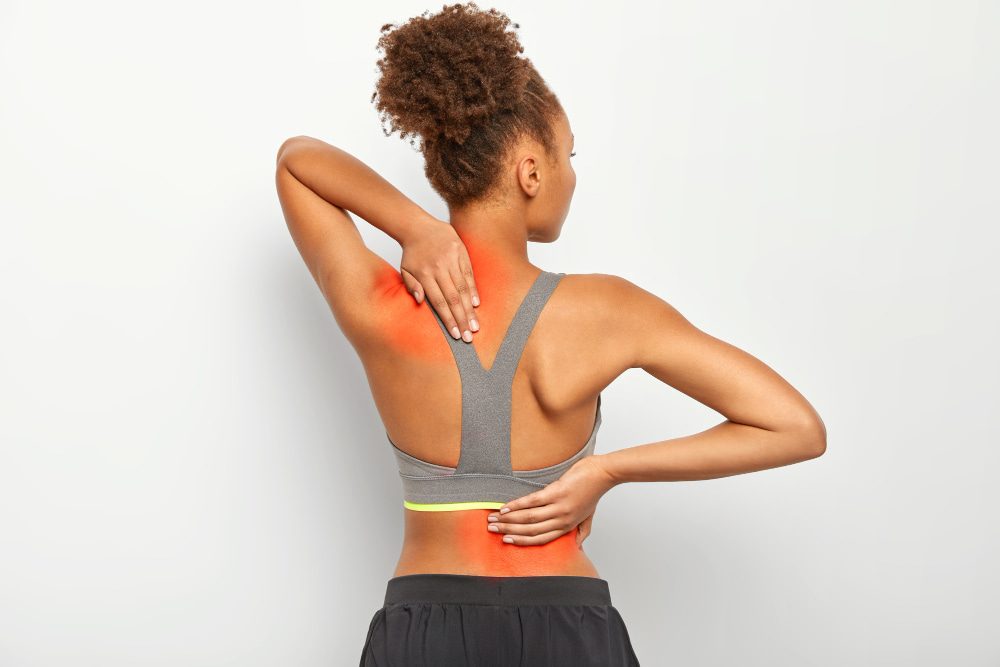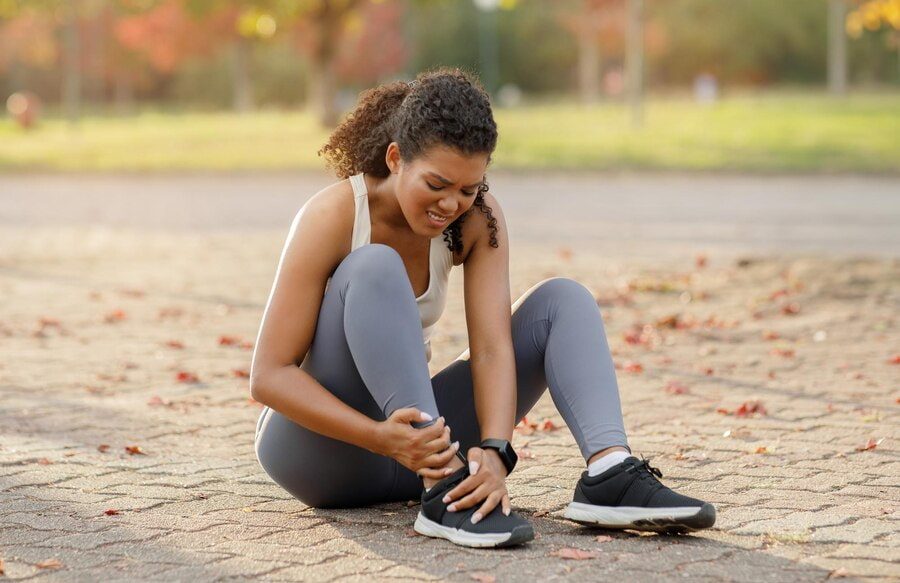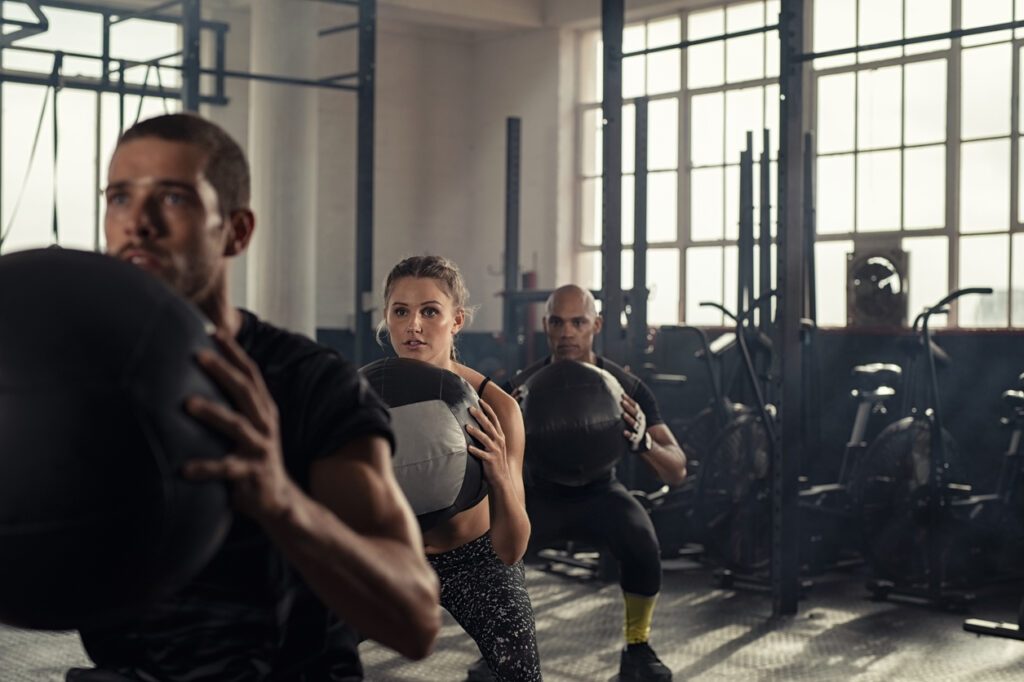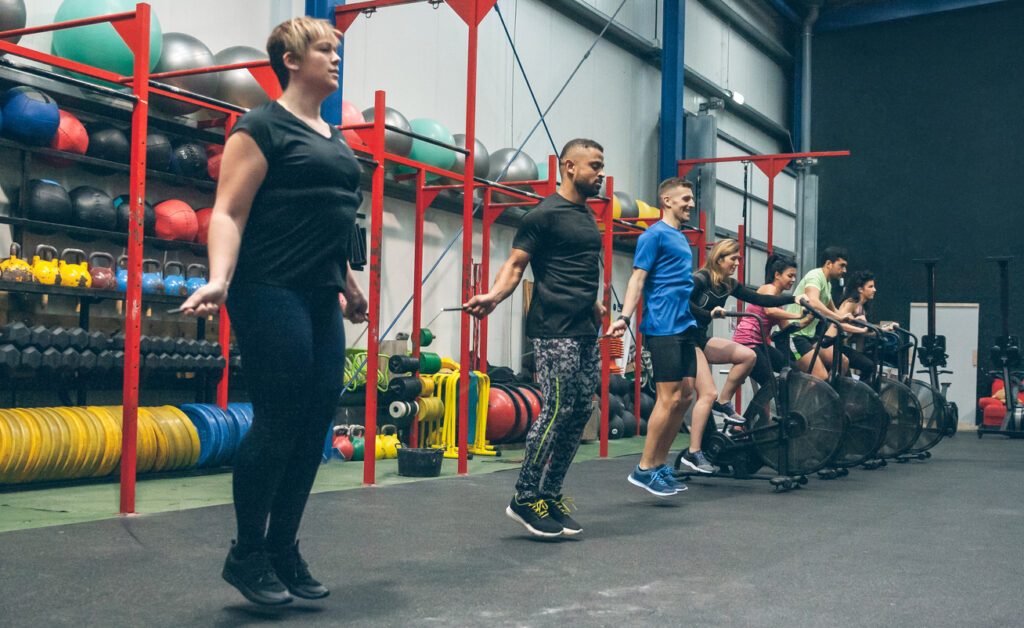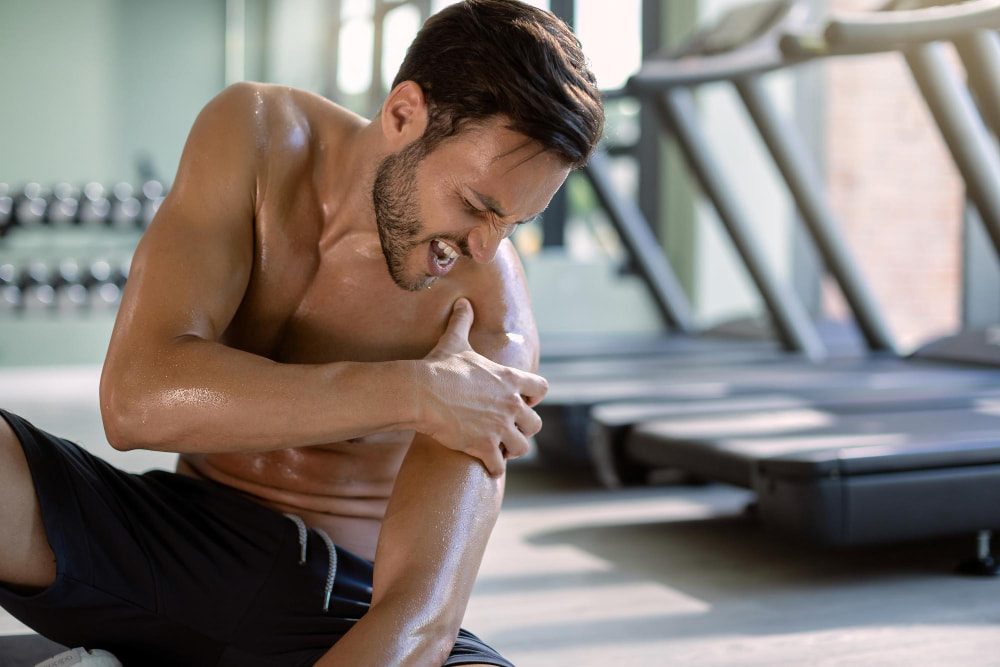
Summary
Welcome / Welcome / Tips for getting started / How to avoid cramps during a HIIT session?
How to avoid cramps during a HIIT session?
Les crampes musculaires peuvent gâcher vos séances de HIIT ou de cross training, réduisant votre performance et votre motivation. Comprendre pourquoi elles surviennent et comment les prévenir est crucial pour optimiser vos entraînements. Cet article vous guide avec des conseils pratiques sur l’échauffement, l’hydratation, la nutrition et la gestion des crampes.
Introduction
Discover exercises and techniques to avoid cramps and maximize your HIIT results. Are you ready to transform your sessions and say goodbye to cramps? Read this article, it’s for you.
Les crampes musculaires peuvent transformer une séance de HIIT, normalement intense et bénéfique, en véritable cauchemar. Ces contractions soudaines et douloureuses affectent souvent les muscles sollicités de manière répétitive et intense, comme c’est le cas lors d’un entraînement HIIT. Imaginez : vous êtes en plein effort, vos muscles travaillent à pleine capacité, et tout à coup, une crampe surgit, vous obligeant à arrêter net. Frustrant, n’est-ce pas ?
Prévenir les crampes est essentiel pour maintenir une performance optimale pendant vos séances de HIIT. Non seulement cela vous permet de tirer le meilleur parti de votre entraînement, mais cela contribue aussi à réduire le risque de blessure. Une bonne préparation et des habitudes appropriées peuvent faire toute la différence entre une séance fluide et une expérience interrompue par la douleur. Alors, comment éviter ces crampes gênantes et profiter pleinement de vos exercices de haute intensité ? C’est ce que nous allons découvrir ensemble.
Understanding muscle cramps
Une crampe musculaire est une contraction involontaire et douloureuse d’un muscle ou d’un groupe de muscles. Contrairement à une simple tension, une crampe provoque une douleur aiguë qui peut durer de quelques secondes à plusieurs minutes. Les symptômes incluent une sensation de muscle dur et noué, souvent accompagnée de douleur intense et de difficulté à bouger la zone affectée. Les crampes peuvent survenir sans avertissement, ce qui les rend particulièrement frustrantes pendant un entraînement.
Why do cramps occur during HIIT?
Les séances de HIIT (High-Intensity Interval Training) sont connues pour leur intensité et leur rapidité. Ces exercices sollicitent fortement les muscles en alternant des périodes d’effort intense et de récupération courte. Cette intensité peut épuiser les réserves d’énergie des muscles, provoquer une accumulation d’acide lactique et déséquilibrer les électrolytes, tous ces facteurs contribuant à l’apparition des crampes. En outre, le manque d’échauffement adéquat ou une hydratation insuffisante peuvent également augmenter le risque de crampes pendant le HIIT.
Preparation before the HIIT session
L’échauffement est une étape cruciale avant toute séance de HIIT. Il permet d’augmenter progressivement la température du corps et de préparer les muscles à l’effort intense à venir. Un bon échauffement améliore la circulation sanguine, ce qui aide à prévenir les crampes en fournissant aux muscles l’oxygène et les nutriments dont ils ont besoin. Quelques exemples d’exercices d’échauffement efficaces pour le HIIT incluent des sauts à la corde, des fentes avant, et des rotations de bras. Ces mouvements dynamiques activent les principaux groupes musculaires sollicités durant l’entraînement.
Adequate hydration
L’hydratation joue un rôle clé dans la prévention des crampes musculaires. Une déshydratation peut déséquilibrer les niveaux d’électrolytes dans le corps, augmentant ainsi le risque de crampes. Il est essentiel de boire de l’eau tout au long de la journée, et non seulement avant ou pendant l’exercice. Pour une hydratation optimale avant une séance de HIIT, consommez environ 500 ml d’eau deux heures avant l’entraînement et continuez à boire de petites gorgées pendant l’exercice. Les boissons électrolytiques peuvent également être bénéfiques, surtout par temps chaud ou pour des séances particulièrement intenses.
Nutrition and mineral intake
A balanced diet rich in essential minerals like potassium, magnesium and calcium can help prevent muscle cramps. These minerals play a crucial role in muscle and nerve function. For example, bananas are an excellent source of potassium, while almonds provide magnesium and dark chocolate is rich in beneficial antioxidants. Incorporate these foods into your daily diet to maintain your mineral levels and reduce the risk of cramps during your HIIT sessions.
Exercises to Avoid Cramps During HIIT
Les étirements dynamiques sont essentiels pour préparer vos muscles avant une séance de HIIT. Contrairement aux étirements statiques, les étirements dynamiques impliquent des mouvements actifs qui augmentent la flexibilité et améliorent la circulation sanguine. Quelques exemples d’étirements dynamiques efficaces incluent les fentes avant, les rotations de bras et les balancements de jambes. Ces mouvements aident à réchauffer les muscles et à améliorer leur amplitude de mouvement, ce qui peut prévenir les crampes en réduisant la tension musculaire.
Muscle strengthening exercises
Muscle strengthening plays a crucial role in preventing cramps during HIIT. Well-conditioned muscles are less likely to fatigue quickly and develop cramps. Focus on strengthening the muscles used most during HIIT, such as the quads, hamstrings, calves, and core. Exercises like squats, lunges, calf raises, and planks can increase muscle strength and endurance, helping prevent cramps.
Breathing techniques
Une respiration correcte est souvent négligée, mais elle est essentielle pour prévenir les crampes musculaires. Pendant une séance de HIIT, une respiration inefficace peut entraîner une accumulation de dioxyde de carbone et une diminution de l’oxygénation musculaire, augmentant le risque de crampes. Apprenez à synchroniser votre respiration avec vos mouvements. Par exemple, inspirez profondément pendant les mouvements moins intenses et expirez fortement pendant les phases d’effort. Cette technique améliore l’efficacité de la respiration et réduit la tension musculaire, aidant ainsi à prévenir les crampes.
Managing cramps during the session
Lorsqu’une crampe survient en pleine séance de HIIT, la première chose à faire est d’arrêter l’exercice immédiatement. Poursuivre l’entraînement malgré la douleur peut aggraver la crampe et entraîner des blessures plus graves. Prenez quelques instants pour relâcher le muscle affecté et respirez profondément. Masser doucement la zone crampée peut aider à relax the muscle et à soulager la douleur. N’hésitez pas à vous étirer doucement pour favoriser la circulation sanguine dans la zone concernée.
Reprendre l’exercice en douceur
Après une crampe, il est crucial de reprendre l’exercice de manière progressive. Ne revenez pas directement à l’intensité maximale de votre séance de HIIT. Commencez par des mouvements plus légers et moins intenses pour permettre à vos muscles de se réadapter à l’effort. Par exemple, marchez sur place ou faites des mouvements de faible impact avant de reprendre des exercices plus vigoureux. Cette reprise progressive aide à prévenir la réapparition des crampes et à réduire le risque de blessures.
Recovery after the HIIT session
Après une séance de HIIT, les étirements statiques sont essentiels pour aider vos muscles à récupérer et à prévenir les crampes futures. Contrairement aux étirements dynamiques, les étirements statiques impliquent de maintenir une position pendant une période prolongée pour augmenter la flexibilité et réduire la tension musculaire. Quelques exemples d’étirements efficaces incluent l’étirement des mollets, où vous vous tenez debout contre un mur en appuyant le talon au sol, et l’étirement des quadriceps, où vous attrapez votre cheville derrière vous en pliant le genou. Maintenez chaque étirement pendant au moins 30 secondes pour en maximiser les bienfaits.
Muscle relaxation techniques
Les techniques de relaxation musculaire, telles que l’utilisation de rouleaux de massage et de balles de massage, peuvent grandement aider à la récupération post-séance. Les rouleaux de massage permettent de détendre les muscles tendus et de stimuler la circulation sanguine, facilitant ainsi l’élimination des toxines et la reduction of aches. To use a massage roller, place it under the affected muscle and roll slowly to massage the area. Massage balls are ideal for targeting trigger points and hard-to-reach areas, providing deep, targeted muscle relaxation.
Post-session nutrition
La nutrition après une séance de HIIT joue un rôle clé dans la récupération musculaire et la prévention des crampes. Consommer des aliments riches en protéines et en glucides aide à réparer les fibres musculaires et à reconstituer les réserves de glycogène. Par exemple, un smoothie à base de banane et de protéines en poudre, des amandes, ou un yaourt grec avec des fruits sont d’excellentes options. De plus, boire beaucoup d’eau ou des boissons électrolytiques après l’exercice aide à réhydrater le corps et à rééquilibrer les niveaux d’électrolytes, réduisant ainsi le risque de crampes futures.
Conclusion
Preventing muscle cramps during HIIT is essential to optimize your performance. By warming up properly, staying well hydrated and eating a diet rich in minerals, you significantly reduce the risk of cramps.
Appliquez des étirements dynamiques avant l’entraînement et des techniques de relaxation après. Une bonne gestion des crampes pendant la séance vous permet de reprendre l’exercice en douceur et d’éviter les blessures.
Play sports without injuries with DRIP
Do you want to boost your training? Join DRIP! Our varied equipment will put you at ease and push you to surpass yourself.
At DRIP, it's simple: 7 different exercises, 3 rounds, 1 minute per exercise. Continue without a break to burn as many calories as possible! Our coaches, dynamic playlists and immersive lights will motivate you like never before.
Whatever your level, you are welcome at DRIP!
Ready to sweat? Join us in our Parisian studios in Monceau or Grands Boulevards. You will love to hate us! ❤️🔥
Share
Tagged
Read also
follow us
on instagram
To follow all our news,
take advantage of our tutorials and participate
in our many competitions.
BREAKING NEWS!
Receive our newsletter.
